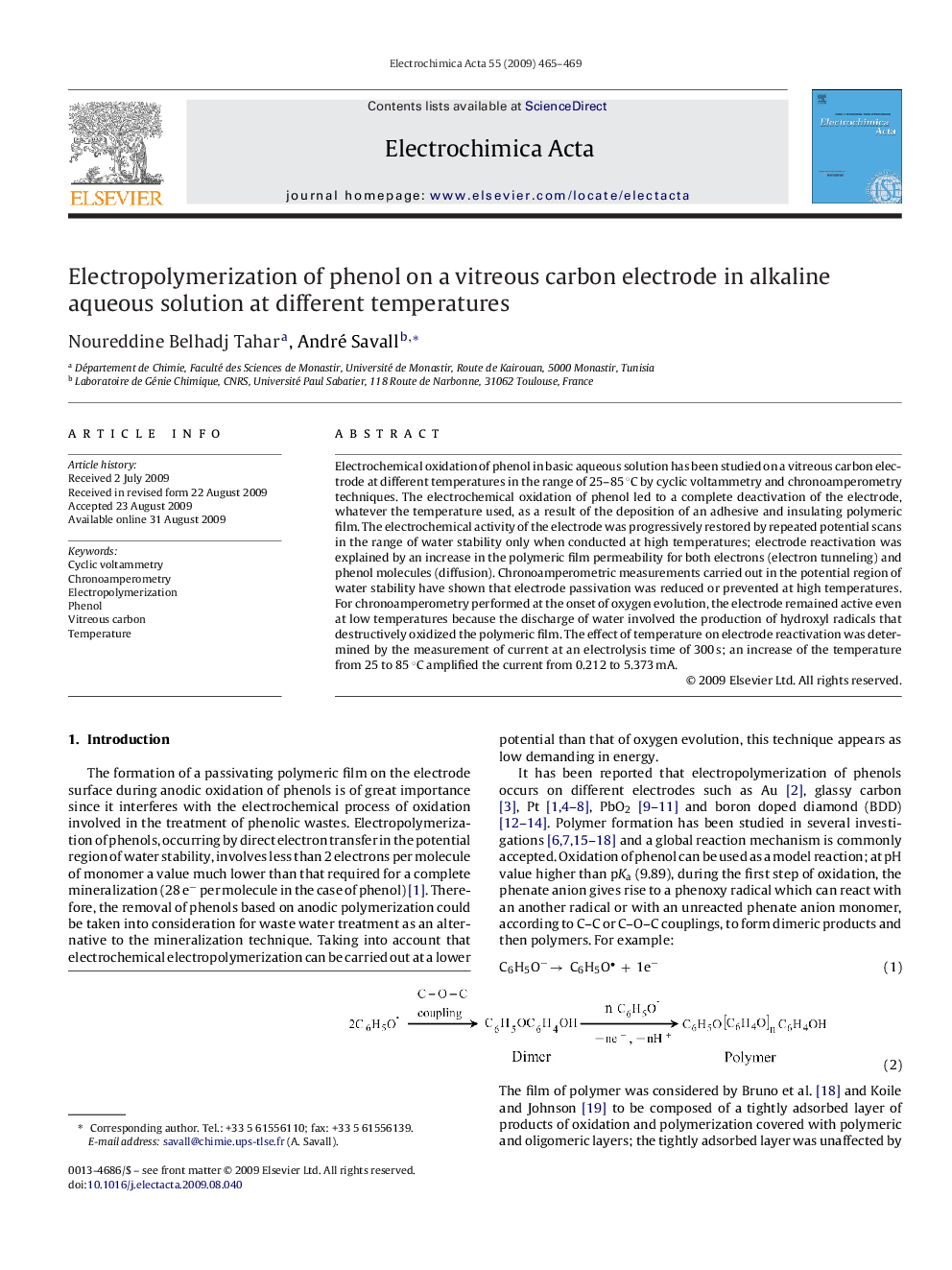| Article ID | Journal | Published Year | Pages | File Type |
|---|---|---|---|---|
| 193036 | Electrochimica Acta | 2009 | 5 Pages |
Electrochemical oxidation of phenol in basic aqueous solution has been studied on a vitreous carbon electrode at different temperatures in the range of 25–85 °C by cyclic voltammetry and chronoamperometry techniques. The electrochemical oxidation of phenol led to a complete deactivation of the electrode, whatever the temperature used, as a result of the deposition of an adhesive and insulating polymeric film. The electrochemical activity of the electrode was progressively restored by repeated potential scans in the range of water stability only when conducted at high temperatures; electrode reactivation was explained by an increase in the polymeric film permeability for both electrons (electron tunneling) and phenol molecules (diffusion). Chronoamperometric measurements carried out in the potential region of water stability have shown that electrode passivation was reduced or prevented at high temperatures. For chronoamperometry performed at the onset of oxygen evolution, the electrode remained active even at low temperatures because the discharge of water involved the production of hydroxyl radicals that destructively oxidized the polymeric film. The effect of temperature on electrode reactivation was determined by the measurement of current at an electrolysis time of 300 s; an increase of the temperature from 25 to 85 °C amplified the current from 0.212 to 5.373 mA.
